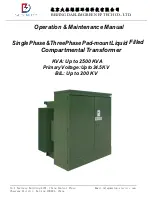
Ethernet Media
4-20
Connector Types
Thick coaxial cables require termination with N-Type connectors. As the coaxial
cable carries network transmissions as voltage, both ends of the thick coaxial
cable must be terminated with N-Type connectors and terminators to keep the
signal from reflecting throughout the cable, which would disrupt network
operation. The terminators used for thick coaxial cable are 50 Ohm (
Ω
)
terminators. These terminators are screwed into an N-Type connector placed at
the end of a run of thick coaxial cabling.
Non-Intrusive
Tapping a thick coaxial cable may be done without breaking the cable itself. The
non-intrusive, or “vampire” tap (Figure 4-10), inserts a solid pin through the thick
insulating material and shielding of the coaxial cable. The solid pin reaches in
through the insulator to the core wire where signals pass through the cable. By
contacting the core, the pin creates a tap. The signals travel through the pin to and
from the core.
Non-Intrusive taps are made up of saddles, which bind the connector assembly to
the cable, and tap pins, which burrow through the insulator to the core wire.
Non-Intrusive connector saddles are clamped to the cable to hold the assembly in
place, and usually are either part of, or are easily connected to, an Ethernet
transceiver assembly.
Figure 4-10. Non-Intrusive Tap and Cable Saddle
The non-intrusive tap’s cable saddle is then inserted into a transceiver assembly
(Figure 4-11). The contact pin, that carries the signal from the tap pin’s connection
to the coaxial cable core, makes a contact with a channel in the transceiver
housing. The transceiver breaks the signal up and carries it to a DB15 connector,
to which an AUI cable may be connected.
1845n10
Transceiver
Contact
Tap Pin
("stinger")
Compression
Screw
Annular Ring
Summary of Contents for 100BASE-FX
Page 1: ...Cabletron Systems Cabling Guide...
Page 2: ......
Page 4: ...Notice ii...
Page 22: ...Cabling Terms 2 8 Test Characteristics...
Page 54: ...Ethernet Media 4 30 Connector Types...
Page 72: ...Full Duplex Ethernet Network Requirements 6 8 Ethernet FOIRL Single Mode...
Page 80: ...Fast Ethernet Network Requirements 7 8 Hybrid Installations...
Page 130: ...FDDI Media 11 16 Connector Types...
Page 136: ...FDDI Network Requirements 12 6 TP PMD STP...
Page 170: ...Connecting and Terminating 14 20 FDDI...
Page 192: ...Index 4...
















































